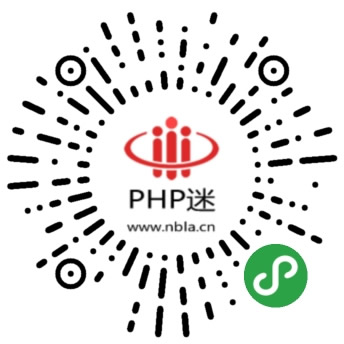MongoDB是一个介于关系数据库和非关系数据库之间的产品,是非关系数据库当中功能最丰富,最像关系数据库的。他支持的数据结构非常松散,是类似json的bjson格式,因此可以存储比较复杂的数据类型。Mongo最大的特点是他支持的查询语言非常强大,其语法有点类似于面向对象的查询语言,几乎可以实现类似关系数据库单表查询的绝大部分功能,而且还支持对数据建立索引。
它的特点是高性能、易部署、易使用,存储数据非常方便。主要功能特性有:
面向集合存储,易存储对象类型的数据。
模式自由。
支持动态查询。
支持完全索引,包含内部对象。
支持查询。
支持复制和故障恢复。
使用高效的二进制数据存储,包括大型对象(如视频等)。
自动处理碎片,以支持云计算层次的扩展性
支持RUBY,PYTHON,JAVA,C++,PHP等多种语言。
文件存储格式为BSON(一种JSON的扩展)
可通过网络访问
所谓“面向集合”(Collenction-Orented),意思是数据被分组存储在数据集中,被称为一个集合(Collenction)。每个 集合在数据库中都有一个唯一的标识名,并且可以包含无限数目的文档。集合的概念类似关系型数据库(RDBMS)里的表(table),不同的是它不需要定 义任何模式(schema)。
模式自由(schema-free),意味着对于存储在mongodb数据库中的文件,我们不需要知道它的任何结构定义。如果需要的话,你完全可以把不同结构的文件存储在同一个数据库里。
存储在集合中的文档,被存储为键-值对的形式。键用于唯一标识一个文档,为字符串类型,而值则可以是各中复杂的文件类型。我们称这种存储形式为BSON(Binary Serialized dOcument Format)。
MongoDB服务端可运行在Linux、Windows或OS X平台,支持32位和64位应用,默认端口为27017。推荐运行在64位平台,因为MongoDB
在32位模式运行时支持的最大文件尺寸为2GB。
MongoDB把数据存储在文件中(默认路径为:/data/db),为提高效率使用内存映射文件进行管理。
以上为随便摘的,其实就是非传统的非关系数据库,现在归到文档型数据库分类之中,注意32位操作系统支持的最大文件为2GB,所以做大文件海量储存的朋友要选择64位的系统安装。开始我们的下载安装之路吧。
一、下载
MongoDB的官网是:http://www.mongodb.org/
MongoDB最新版本下载在官网的DownLoad菜单下:http://www.mongodb.org/downloads
本人选择的是Windows 32-bit 1.8.1版本
MongoDB For .net 驱动开发包位于官网的Driver菜单下(含其它语言开发链接):https://github.com/mongodb/mongo-csharp-driver/downloads
本人操作系统为Windows7 专业版,选择MongoDB版本为Windows 32-bit 1.8.1,开发包为VS2008版本
开始我们的安装过程了
二、安装
1.解压mongodb-win32-i386-1.8.1.zip ,创建路径C:Program Filesmongodb ,将解压后的Bin文件Copy to 此文件夹下
2.C:Program Filesmongodb 下建立Data文件夹 C:Program Filesmongodbdata ,然后分别建立db,log两个文件夹,至此mongodb下有以下文件夹
C:Program Filesmongodbbin
C:Program Filesmongodbdatadb
C:Program Filesmongodbdatalog
在log文件夹下创建一个日志文件MongoDB.log,即C:Program FilesmongodbdatalogMongoDB.log
完成以上工作后,你为奇怪为什么要建立这些文件夹(因为,Mongodb安装需要这些文件夹,默认安装是不用创建,但是文件都为安装到C:data下)
3.安装类型
3.1 程序启动方式
运行cmd.exe 进入DOS命中界面
> cd C:Program Filesmongodbbin
> C:Program Filesmongodbbin>mongod -dbpath "C:Program Filesmongodbdatadb"
执行此命令即将mongodb的数据库文件创建到C:Program Filesmongodbdatadb 目录,不出意外的会看到命令最后一行sucess的成功提示
此时数据库就已启动,该界面为Mongo的启动程序,关闭后可直接双击bin下的mongod.exe (注意是d,这个是启动程序)
启动程序开启后,再运行mongo.exe 程序(注意没有d) ,界面如下

测试数据库操作
>help (查看相关信息)
>db.foo.insert({a:1}) (往foo表插入a,1字段值,foo表为默认表)
>db.foo.find() (查看foo表数据)
结果如下:

可以看到插入了3条记录分别人a,cctv,set 。
当mongod.exe被关闭时,mongo.exe 就无法连接到数据库了,因此每次想使用mongodb数据库都要开启mongod.exe程序,所以比较麻烦,接下来我们将
MongoDB安装为windows服务吧
3.2 windows service方式
运行cmd.exe
> cd C:Program Filesmongodbbin
> C:Program Filesmongodbbin>mongod --dbpath "C:Program Filesmongodbdatadb" --logpath "C:Program FilesmongodbdatalogMongoDB.log" --install --serviceName "MongoDB"
这里MongoDB.log就是开始建立的日志文件,--serviceName "MongoDB" 服务名为MongoDB
运行命令成功为如下图:

引时服务已经安装成功,运行
>NET START MongoDB (开启服务)
>NET stop MongoDB (关闭服务)
>
> C:Program Filesmongodbbin>mongod --dbpath "C:Program Filesmongodbdatadb" --logpath "C:Program FilesmongodbdatalogMongoDB.log" --remove --serviceName "MongoDB" (删除,注意不是--install了)
其它命令可查阅help命令或官网说明。
查看服务

运行bin文件夹下mongo.exe 客户端测试一下吧。测试同3.1相同 。
到此安装就完成了。
本节问题:
为什么要用MongoDB
MongoDB for .net驱动选择
MongoDB for VS插件介绍
Demo介绍
一、为什么要用MongoDB
为什么要用MongoDB取代传统关系型数据库?其实不是取代,只是对传统数据库的文档型补充。不是所有的数据都需要二维关系及多表对应的存储和查询,比如:文件的海量存储,只需Key与Value形式的存储及查询,同时这种方式的存储及查询都是高效的,可查看GirdFS,GirdFS是MongoDB的大文件存储系统,比如图片、音频、视频;数据如果不需要实时分析统计(包含读写比高的),也可以使用KV形式存储及查询。MongoDB介于缓存与数据库之间,存取速度逊于缓存但远远高于传统数据库。数据库存储以键值形式,你可能会认为对数据关系的处理及分析挖掘不及传统数据库,理论上是如此,但是MongoDB加入了对LINQ的支持,相信可以弥补其不足之处。做项目要求稳,对于MongoDB的使用我们只是对传统数据库的一个类似二级缓存的补充,cache缓存及Memcached做为一级缓存,MongoDB做为二级缓存对海量大数据的一个缓冲查询,最终才是数据库及物理文件的存储。如果你对数据的分析挖掘统计不是实时的,也可以尝试使用MongoDB直接存取数据,数据后期处理工作可通过MongoDB同步到传统数据库。(以上纯属个人理解)
用MongoDB做海量存储,又出现另一个问题读写频率与扩展?MongoDB可以根据应用程序的需要以两种模式来运行。第一种是“单主”(single master)模式,只有一台主服务器来处理所有的写操作。读操作能从中分离出去,通过任意数量的从服务器来进行读操作,这有利于提高读的可扩展性(使用场景:Sourceforge)。对于那些写数据量很大或写频率过高,单台主服务器无法处理的应用程序,可以使用MongoDB的自动分片模式。该模式下写操作会自动分配到任意数量的“片”中(一般是一台或一组MongoDB服务器),它们负责这部分数据集的写和读。无论使用哪种模式,MongoDB都会采取“强一致性”方法(你可以把MongoDB看成CAP理论中的C-P系统)。高可用性是通过将数据复制到多个MongoDB节点来实现的,每个节点都能及时成为一个分片的主服务器——MongoDB会自动处理故障转移。这能让你在维持相当高的写可用性的同时,拥有强一致性特性,这对一些用例来说非常重要。而MongoDB的分片支持复制和故障切换:Mongo数据库支持服务器之间的数据复制,支持主-从模式及服务器之间的相互复制。MongoDB的自动分片模块 ("mongos"). 自动分片可以用于构建一个大规模的可扩展的数据库集群,这个集群可以并入动态增加的机器。(说细可参照此官方文档)
二、MongoDB for .net驱动选择
驱动源码地址:https://github.com/mongodb/mongo-csharp-driver/downloads(第一章提到的)

项目应用:
第一款:mongodb-csharp 项目地址:http://github.com/samus/mongodb-csharp 应用很广泛,更新速度也比较快,也加入了对LINQ的支持
第二款:simple-mongodb 项目地址:http://code.google.com/p/simple-mongodb 以JSON为核心
第三款:NoRM 项目地址:http://github.com/atheken/NoRM 加入了对强类型的支持,是对一的补充
其它的也有,就不介绍了,经过综合比较选择了方案一,也就是第一章介绍的。方案一应该广泛用于项目了,并且保持较快的更新速度,同时也加了LINQ的支持,对于项目求稳的朋友是最好的选择,所以我也选择了方案一samus驱动,下载的是(samus-mongodb-csharp-0.90.0.1.zip)下载选Tar.Zip包含源码。另外一个包只有DLL。后面的文章中将一直使用samus开发包。
三、MongoDB for VS插件介绍
插件下载地址:http://www.cnblogs.com/ILoveSilence/archive/2010/08/10/mongowidget_1.html (园子里人做的)
插件和VS的数据源功能类似,想使用的就去看这篇博文吧。
四、Demo介绍
下载samus开发包后,你会发现里面已经有了samples了,那就开始我们的入门之路了

这Demo都不写了,直接拿来分析了
留意的朋友会发现,MongoDB的连接字符串是IP+端口,与传统的数据库引擎不同,包括数据的CURD操作都是键值方式,是不是有点像Memcached。
using System;
using System.Configuration;
using System.Linq;
using MongoDB;
using MongoDB.Configuration;
using MongoDB.Linq;
namespace Simple
{
///
/// Illustrates some simple operations on the database.
/// Creating a database connection.
/// Remove some documents.
/// Insert some documents
/// Find one document
/// Find several documents and iterate through them.
///
internal class MainClass
{
private IMongoCollection
private Mongo mongo;
private IMongoDatabase simple;
private class MyClass
{
public string Name { get; set; }
public int Corners { get; set; }
}
private class SubClass : MyClass
{
public double Ratio { get; set; }
}
public static void Main(string[] args)
{
#region 以下为被屏蔽源码部分,我们先从SetUp方法开始
//var config = new MongoConfigurationBuilder();
//// COMMENT OUT FROM HERE
//config.Mapping(mapping =>
//{
// mapping.DefaultProfile(profile =>
// {
// profile.SubClassesAre(t => t.IsSubclassOf(typeof(MyClass)));
// });
// mapping.Map
// mapping.Map
//});
//// TO HERE
//config.ConnectionString("Server=127.0.0.1");
//using (Mongo mongo = new Mongo(config.BuildConfiguration()))
//{
// mongo.Connect();
// try
// {
// var db = mongo.GetDatabase("TestDb");
// var collection = db.GetCollection
// MyClass square = new MyClass()
// {
// Corners = 4,
// Name = "Square"
// };
// MyClass circle = new MyClass()
// {
// Corners = 0,
// Name = "Circle"
// };
// SubClass sub = new SubClass()
// {
// Name = "SubClass",
// Corners = 6,
// Ratio = 3.43
// };
// collection.Save(square);
// collection.Save(circle);
// collection.Save(sub);
// var superclass = (from item in db.GetCollection
// where item.Corners > 1
// select item.Corners).ToList();
// var subclass = (from item in db.GetCollection
// where item.Ratio > 1
// select item.Corners).ToList();
// Console.WriteLine("Count by LINQ on typed collection: {0}", collection.Linq().Count(x => x.Corners > 1));
// Console.WriteLine("Count by LINQ on typed collection2: {0}", db.GetCollection
// //Console.WriteLine("Count by LINQ on typed collection3: {0}", db.GetCollection
// Console.WriteLine("Count on typed collection: {0}", collection.Count(new { Corners = Op.GreaterThan(1) }));
// var coll = db.GetCollection("MyClass");
// var count = coll.Count(new Document("Corners", Op.GreaterThan(1)));
// Console.WriteLine("Count: {0}", count);
// Console.ReadKey();
// }
// finally
// {
// mongo.Disconnect();
// }
//}
#endregion
var main = new MainClass();
main.Setup();
main.Run();
Console.ReadLine();
}
///
/// Setup the collection and insert some data into it.
///
public void Setup()
{
//从配置文件读取连接字符串 IP+端口
var connstr = ConfigurationManager.AppSettings["simple"];
if(String.IsNullOrEmpty(connstr))
throw new ArgumentNullException("Connection string not found.");
//创建Mongo数据服务及连接
mongo = new Mongo(connstr);
mongo.Connect();
//获取数据库实例(如果该实例不存,就会自动创建simple实例)
simple = mongo["simple"];
//获取表名(如果该表名不存在,就会自动创建categories表名)
categories = simple.GetCollection
//添加记录前清除所有记录
Clean();
var names = new[] {"Bluez", "Jazz", "Classical", "Rock", "Oldies", "Heavy Metal"};
//循环插入记录 doucment会自动生成键值_id,id的编码体现了数据的插入顺序
foreach(var name in names)
categories.Insert(new Document {{"name", name}});
}
public void Clean()
{
//删除document name 为Jazz的记录
categories.Remove(new Document {{"name", "Jazz"}}); //remove documents with the name Jazz.
//删除所有记录集
categories.Remove(new Document()); //remove everything from the categories collection.
}
public void Run()
{
//查找单条记录 参数类型为Document
var category = categories.FindOne(new Document {{"name", "Bluez"}});
Console.WriteLine("The id findOne" + category["_id"]);
//更新1 用键值ID读取对象,并更新字段值,保存
var selector = new Document {{"_id", category["_id"]}};
category["name"] = "Bluess";
//The following will do the same thing.
categories.Save(category);
Console.WriteLine("Category after one update " + categories.FindOne(selector));
//更新2 Update参数1去更新参数2并保存
category["name"] = "Blues";
categories.Update(category, selector);
Console.WriteLine("Category after two updates " + categories.FindOne(selector));
//Find it by _id that has been converted to a string now.
var id = (category["_id"]).ToString();
//注意: 这里id.ToString()与id.ToOid() (为什么类扩展这个方法,我也没明白,是不是id!=24 位会出现转义字符要替换掉)
Console.WriteLine(string.Format("Found by string id[{0}] converted back to Oid[{1}]",id.ToString(),id.ToOid()));
Console.WriteLine(categories.FindOne(new Document {{"_id", id.ToOid()}}));
//Find(new Document()) is equivalent to FindAll();
//Specifying the cursor in a using block will close it on the server if we decide not
//to iterate through the whole thing.
Console.WriteLine("输出所有对象.........");
using(var all = categories.Find(new Document()))
{
foreach(var doc in all.Documents)
Console.WriteLine(doc.ToString());
}
mongo.Disconnect();
}
}
}
//类扩展ToOid方法到string中
public static class OidExtensions
{
public static Oid ToOid(this string str)
{
if(str.Length == 24)
return new Oid(str);
return new Oid(str.Replace(""", ""));
}
}
以上为MongoDB的数据库连接及CRUD操作(Document方式),我们来测试一下,数据库实例,表,记录是否创建成功了呢?
打开上一章提到的Bin文件夹下的Mongo.exe程序 按图示输入命令查看

入门Demo就演示到这里了,有点简单,我也在是一边学习一边分享。Demo就不提供下载了,都在samus里面,只是我这边加了注释。
上一节我们在samus的simple例子简单的入门了,这一节将要探讨的问题写个简要
对象存储
继续关系对象的存储
LINQ体现
类关系分析
一、对象存储
继续在samus源码上分析,依然是simple的例子。Demo中.net 3.5特性基本上都涉及了。
public static void Main(string[] args)
{
#region 以下为Mongo配置及关系映射部分
//var config = new MongoConfigurationBuilder();
//COMMENT OUT FROM HERE
//config.Mapping(mapping =>
//{
// mapping.DefaultProfile(profile =>
// {
// profile.SubClassesAre(t => t.IsSubclassOf(typeof(MyClass)));
// });
// mapping.Map
// mapping.Map
//});
// TO HERE
#endregion
//config.ConnectionString("Server=127.0.0.1");
//using (Mongo mongo = new Mongo(config.BuildConfiguration()))
using (Mongo mongo = new Mongo("Server=127.0.0.1"))
{
mongo.Connect();
try
{
//索引器方式mogo["TestDb"]
var db = mongo.GetDatabase("TestDb");
//老版不支持泛型的时候写法是这样的db.GetCollection("Name") ->看源码重构了一个MongoCollection_1类
//将老版方法重构为db.GetCollection
//此方法其实将类名反射为集合 db.GetCollection
var collection = db.GetCollection
//.net 3.5集合初始化特性 创建3个对象(2个MyClass,1个子类SubClass)
MyClass square = new MyClass()
{
Corners = 4,
Name = "Square"
};
MyClass circle = new MyClass()
{
Corners = 0,
Name = "Circle"
};
SubClass sub = new SubClass()
{
Name = "SubClass",
Corners = 6,
Ratio = 3.43
};
//保存对象
collection.Save(square);
collection.Save(circle);
collection.Save(sub);
#region LINQ写法读取数据
//var superclass = (from item in db.GetCollection
// where item.Corners > 1
// select item.Corners).ToList();
//var subclass = (from item in db.GetCollection
// where item.Ratio > 1
// select item.Corners).ToList();
#endregion
//Lambda写法
//读取集合MyClass所有对象
Console.WriteLine("Count by LINQ on typed collection: {0}", collection.Linq().Count(x => x.Corners > 1));
//读取集合为SubClass的对象(由于SubClass被保存到MyClass集合中了,故结果为0)
Console.WriteLine("Count by LINQ on typed collection2: {0}", db.GetCollection
//Console.WriteLine("Count by LINQ on typed collection3: {0}", db.GetCollection
//注:op 是Document的子类 虽然我们存的是其它对象,但所有的对象最终都是以Document类型存储的,
//也就意味检索数据也是Document方式查找或统计了,以下Lambda方式的统计就体现了
//在基类中大家可以看到都是count(new Document())方式及条件查询的,这里介绍完了,下面的代码就容易理解了
Console.WriteLine("Count on typed collection: {0}", collection.Count(new { Corners = Op.GreaterThan(1) }));
var count = collection.Count(new Document("Corners", Op.GreaterThan(1)));
Console.WriteLine("Count: {0}", count);
Console.ReadKey();
}
finally
{
mongo.Disconnect();
}
}
//var main = new MainClass();
//main.Setup();
//main.Run();
Console.ReadLine();
}
看一下结果:

在打开mongo.exe查看一下结果

是不是很奇怪,MyClass,SubClass对象又没有标记为可序列化,如何就被保存下来了?难道是通过反射对实现的,看看源码

二、继续关系对象的存储
当数据保存为文档记录时,MongoDB是如何识别这个两类是有继承关系的呢?我们接着下面的代码修改一下继续
先删除上次的记录,在mongo.exe中运行db.MyClass.drop() 删除集合中的数据,查看更多操作集合的命令可执行db.MyClass.help
mongo.exe脚本命令官方介绍用的是Javascript脚本,从命名可以看出是它的影子。mongo.exe的脚本学习可参照这个链接
http://special.csdn.net/mongodb/index.html
public static void Main(string[] args)
{
#region 以下为Mongo配置及关系映射部分
var config = new MongoConfigurationBuilder();
//COMMENT OUT FROM HERE 建立两者的关系
config.Mapping(mapping =>
{
mapping.DefaultProfile(profile =>
{
profile.SubClassesAre(t => t.IsSubclassOf(typeof(MyClass)));
});
mapping.Map
mapping.Map
});
// TO HERE
#endregion
config.ConnectionString("Server=127.0.0.1");
//将配置注入Mongo类中
using (Mongo mongo = new Mongo(config.BuildConfiguration()))
{
mongo.Connect();
try
{
//索引器方式mogo["TestDb"]
var db = mongo.GetDatabase("TestDb");
//老版不支持泛型的时候写法是这样的db.GetCollection("Name") ->看源码重构了一个MongoCollection_1类
//将老版方法重构为db.GetCollection
//此方法其实将类名反射为集合 db.GetCollection
var collection = db.GetCollection
//.net 3.5集合初始化特性 创建3个对象(2个MyClass,1个子类SubClass)
MyClass square = new MyClass()
{
Corners = 4,
Name = "Square"
};
MyClass circle = new MyClass()
{
Corners = 0,
Name = "Circle"
};
SubClass sub = new SubClass()
{
Name = "SubClass",
Corners = 6,
Ratio = 3.43
};
//保存对象
collection.Save(square);
collection.Save(circle);
collection.Save(sub);
#region LINQ写法读取数据
//var superclass = (from item in db.GetCollection
// where item.Corners > 1
// select item.Corners).ToList();
//var subclass = (from item in db.GetCollection
// where item.Ratio > 1
// select item.Corners).ToList();
#endregion
//Lambda写法
//读取集合MyClass所有对象
Console.WriteLine("Count by LINQ on typed collection: {0}", collection.Linq().Count(x => x.Corners > 1));
//读取集合为SubClass的对象(由于SubClass被保存到MyClass集合中了,故结果为0)
Console.WriteLine("Count by LINQ on typed collection2: {0}", db.GetCollection
//Console.WriteLine("Count by LINQ on typed collection3: {0}", db.GetCollection
//注:op 是Document的子类 虽然我们存的是其它对象,但所有的对象最终都是以Document类型存储的,
//也就意味检索数据也是Document方式查找或统计了,以下Lambda方式的统计就体现了
//在基类中大家可以看到都是count(new Document())方式及条件查询的,这里介绍完了,下面的代码就容易理解了
Console.WriteLine("Count on typed collection: {0}", collection.Count(new { Corners = Op.GreaterThan(1) }));
var count = collection.Count(new Document("Corners", Op.GreaterThan(1)));
Console.WriteLine("Count: {0}", count);
Console.ReadKey();
}
finally
{
mongo.Disconnect();
}
}
//var main = new MainClass();
//main.Setup();
//main.Run();
Console.ReadLine();
}
结果:

再看mongo.exe中的记录:

三、LINQ的体现

 View
Code
View
Code#region LINQ写法读取数据
var myCollection = (from item in db.GetCollection
where item.Corners > 1
select item).ToList();
foreach (MyClass my in myCollection)
{
Console.WriteLine(my.Name+":"+my.Corners.ToString());
}
var subCollection = (from item in db.GetCollection
where item.Ratio > 1
select item).ToList();
foreach (SubClass subClass in subCollection)
{
Console.WriteLine(subClass.Name+":"+subClass.Ratio.ToString());
}




